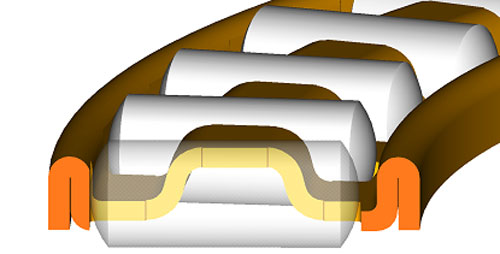- Joined
- Apr 27, 2007
- Messages
- 3,379
Jim,
Since you are running an all steel front end, what are your thoughts on replacing the rear ball bearing with needles? The front bearing would have to remain a deep grove BB to handle any thrust forces. You would have to case harden the crank and housing, but you would expect to see greater load handling on the rear although at possibly greater friction. Thoughts?
On the topic of cantilevered versus three piece crank: Hypothetically speaking, if a three piece crank was aligned with the same tolerances as a cantilevered crank, the friction and stability should be superior over the cantilevered? If there were no other packaging considerations, what are the pro's and con's of the cantilevered versus 3 piece?
-Tyler
Since you are running an all steel front end, what are your thoughts on replacing the rear ball bearing with needles? The front bearing would have to remain a deep grove BB to handle any thrust forces. You would have to case harden the crank and housing, but you would expect to see greater load handling on the rear although at possibly greater friction. Thoughts?
On the topic of cantilevered versus three piece crank: Hypothetically speaking, if a three piece crank was aligned with the same tolerances as a cantilevered crank, the friction and stability should be superior over the cantilevered? If there were no other packaging considerations, what are the pro's and con's of the cantilevered versus 3 piece?
-Tyler















